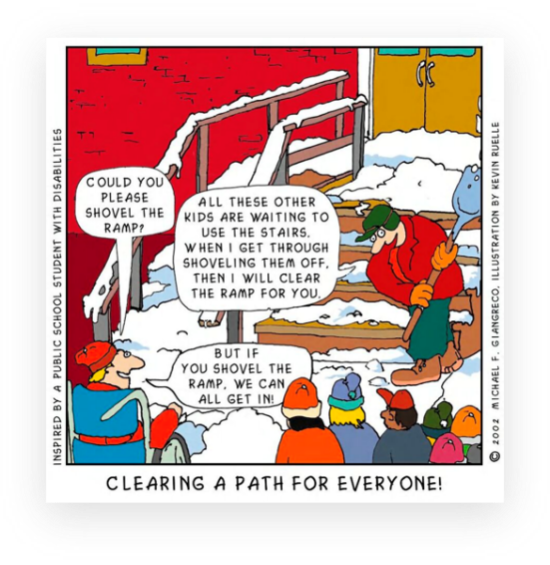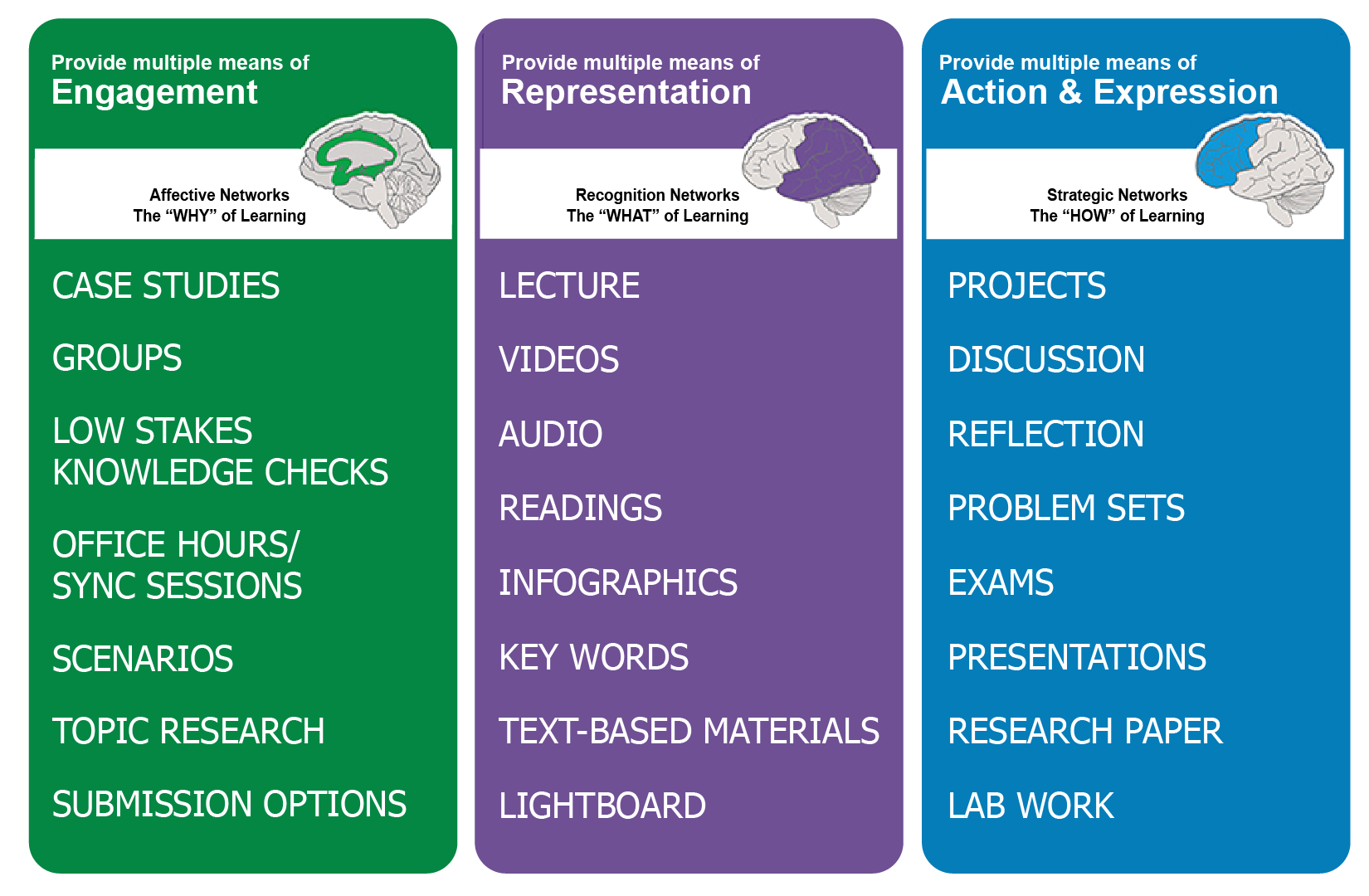
A Focus on Group ProjectsDr. E. David Jansing:
A Focus on DiscussionsDr. Rachel Sangree:
A Focus on Student SkillFaculty Spotlight:
Dr. Alton Harris, IIIFaculty Spotlight:Dr. Janice ZiarkoReimagining Office HoursJoin the Faculty Forward Fellowship!


Inclusive teaching and accessibility have been the topics of numerous Faculty Forward workshops, training courses, and Magazine articles in recent years. You can find a sampling in the Resources section below and on the Faculty Forward Academy website. We have explored common terminology, disability as a form of diversity, and the reasons why students or faculty and staff might be reluctant to disclose disabilities. In the new Faculty Program on Accessibility and Disability Inclusion, we examined the history of disability, legal mandates, and the role of faculty in working with Student Disability Services to provide accommodations.
Proactive planning for accessibility reduces the need for students to request accommodations, but just meeting accessibility requirements may not create an inclusive environment. The video Accessibility Versus Inclusion depicts a group of friends going out to eat at a restaurant (Celebrating Diversity, 2022). While most of the group is warmly greeted and led to their table, their friend who uses a wheelchair is forced to use the ‘accessible’ route around the dumpster, through the kitchen, and past the toilets. The video aptly depicts Jay Dolmage’s (2017) symbolism that accommodations are often ‘The Retrofit’ – or added later such as a ramp at the back of the building. While accessible, the experience is certainly not inclusive or welcoming.
We have created context around being reflective educators who welcome diverse voices in both the EP program and engineering field in general. But how do we actually design or update our teaching practices to engage all students more effectively?
One framework that was briefly explored in previous articles is Universal Design for Learning (UDL). The cartoon depicts the origins of universal design in architecture and urban planning, where ramps were found to be useful for most people – when we are both inclusive and accessible!
UDL is more of a mindset than a method and encourages us to consider learner diversity while designing or updating our courses. You might begin by doing a self-assessment of your teaching practices and learning environment. Reflect on your ‘why’ and consider the pain points for both you, as an educator, and for your students:
UDL builds in flexibility to meet the needs of a variety of learners. Flexibility in terms of building motivation and engagement with the subject for both students who are new to the field and those with more expertise. Flexibility in ways of representing course content such as videos, readings, infographics, investigations, or case studies. And flexible means of expression for students to demonstrate what they understand through thoughtful assessment design.

Perhaps successfully solving equations or creating code is an important skill set in your field. For multiple ways of representing the material, you could use MATLAB and Simulink to create simulations or Jupyter Notebooks to present code. To walk through the steps in solving equations, you could use the Lightboard, Explain Everything or solve problems live during Office Hours. You could also offer a text-based option with step-by-step commentary and accessible equations that students could listen to using the Immersive Reader in Canvas.
For multiple means of expression, you could provide a discussion where students can collaborate while solving problem sets and a project where students apply these skills to an authentic problem in the field. For coding, consider tools like Jupyter Notebooks and student reflections on their trial and error as an assessment BY learning.
If you are teaching a systems or project management course, consider using the Lightboard to discuss diagrams or schematics or create an infographic with interactive elements that provide more information using hot spots. Students can also create infographics, videos, Wiki pages, or podcasts as professional skill-building alternatives to the typical voice over PowerPoint assessment OF learning.